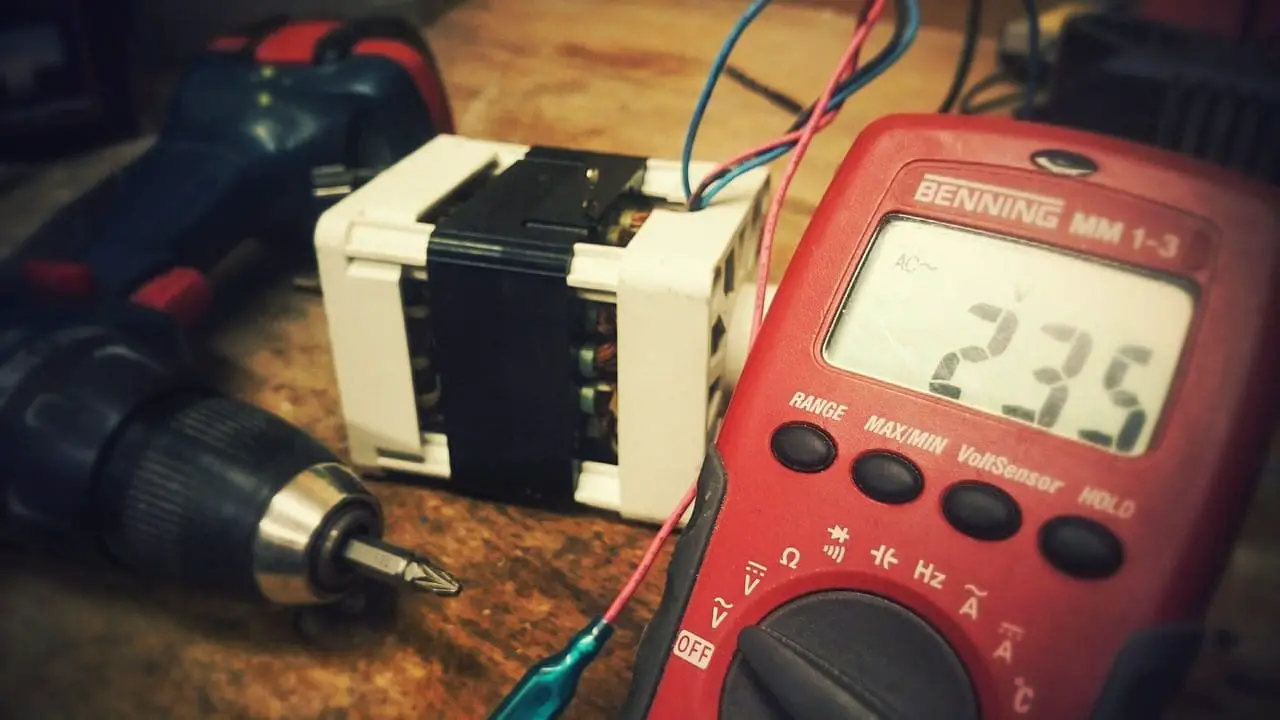Technology is developing in the Universe. Science people used to calculate the resistance by some Units. There are types of measurement systems that help in measuring electrical systems. Ohms and Watts are the measurement units that help in measuring conductance and resistance.
Key Takeaways
- Ohms measure electrical resistance, which is the ability to resist the current flow, while watts measure electrical power, which is the rate of energy transfer.
- Ohms are represented by the Greek letter omega (Ω), while watts are represented by “W”.
- Ohms are used to calculating the current flowing in a circuit, while watts are used to calculate the power consumed by the circuit.
Ohms vs Watts
Ohms is a unit that measures the resistance of an electrical circuit, while watts measure the power of the circuit. Ohms and watts are related to each other through Ohm’s Law, which states that the current flowing through a circuit is equal to the voltage divided by the resistance.

Ohms is a measurement unit that helps to find the electrical resistance. The base unit of the Ohms is the SI unit system. The name Ohms had derived from the German Physicist ‘George Ohm’.
It had used to calculate the electrical resistance between points of a conductor. The electrical resistance between points of a conductor has a constant potential difference of one volt applied to the endpoints, producing one ampere of current in a conductor.
Watts is a SI unit that is used to measure the power or radiant flux. Watts is used to define how fast the energy had produced in terms of power. The name Watts had derived from the Scottish inventor James Watt in the 18th century.
The unit of Power was known as horsepower. The increase in watts has several names. The watt produces a joule of energy per second.
Comparison Table
| Parameters of Comparison | Ohms | Watts |
|---|---|---|
| Meaning | Ohms is unit helps to measure the electrical resistance of electrical appliances. | Watts is a unit of measurement that helps to measure the energy produced. |
| Derived | Ohms had derived from the German Physicist George Ohms. | The name ‘Watts’ had derived from the Scottish inventor James Watts. |
| Units | SI unit of the Ohms is Kg.m^2/s^3.A^2 | SI unit of the Watts is kg·m2·s−3. |
| Difference | Ohms laws define that the Volts had divided by the Amperes. | Watts law defines that Volts had multiplied with the Amperes. |
| Equality | Two units of Ohms produce the output power of 550 Watts. | 550 Watts of powers had produced by generating the 2 Ohms. |
What is Ohms?
Ohms is a SI unit that helps in measuring the electrical resistance in electrical devices. The name Ohms had derived from the German Physicist ‘George Ohms’.
The electrical resistance produced between the two points of a conductor that the constant potential energy where one volt had to the endpoints. Then the conductor produces the one-ampere Current.
George Simon Ohms had stated the Ohms law. The Ohms Law states that a conductor with the current flow is directly proportional to the Potential difference or volts and inversely proportional to the resistance.
The Ohms Law defines the measurements of the circuits depending on the wire length contexts applied by the volts and Current. The Ohms had derived as the Volt/Area and the symbol of the Ohms is Ω. It had derived as the SI unit. The Units of Ohms is kg*m^2/s^*A^2.
The Formula of the Ohms law is V=I*R, Where
- V is the Voltage
- I denote the supplied Current
- R is the resistance.
The relation between the volts, current, and resistance states that voltages are equal when the Current multiplies with resistance. Ohms law is the primary law to find the Voltages, Current, the resistance of an element in an electric circuit.
The unit of the Ohms is the electrical resistance and conductance of a circuit. The inverse of the Ohm is Simens and it had denoted as Omega in the Greek language.
The definition of Ohm had defined in terms of the Quantum Hall Effect. Two units of Ohms produce the output power of 550 Watts. The calculation of Ohms into Watts depends on the volts we choose.

What is Watts?
Watts is a unit of measurement that helps to measure power. The name Watts had derived from the Scottish inventor James Watt in the 18th Era. Watts helps to measure how fast the energy had produced in terms of power or intensity.
Watt is a method used to calculate the rate of energy of the devices by processing one joule per second. The measuring quantity had referred to as J/s and written as kg·m2·s−3.
It had used to measure the rate of energy transfer. The unit of the Watt is Power, and Watts is a SI unit system. The formula kg·m2·s−3 is the SI-based unit. A horsepower is a unit of Potentiality, where horsepower is equal to 746 Watts. James Watt was the inventor of Watts Law.
Watts Law states the relationship between Power, Current and Voltage. The formulae of the Watts Law is P=V*I, where
- P is equal to Power
- V denotes the Volts
- I had denoted it as the supplied Current.
10 Watts with 5 volts produces 2 amperes of Current. The formulary states that Power is equal when the Voltage has Multiplied by the Current.
One can get two forms by combining the Watts Law and the Ohms Law. The formulas are P=V*V/R, P=I*I*R. Watt is used to measure the radiant flux.
Watt has different multiples like Attowatt, Femtowatt, Megawatt and many others. We provide the whole multiples and their uses in the reference section.

Main Differences Between Ohms and Watts
- Ohms is a measurement unit that helps in calculating electrical resistance, whereas Watts is a unit of measurement that help out to measure Potentiality.
- The unit of Ohms deals with Current, Voltage and Resistance. In Contrast, Watt deals with Current, Voltage and Power.
- The formulary of the Ohms is V=I*R, and the Watts is P=V*I.
- Both the Ohms and Watts are SI units. Ohms law defines that the Volts had divided by Amperes. On the other hand, Watts’s law defines the Volts had multiplied by the Amperes.
- Two units of Ohms produce the output power of 550 Watts, whereas One Watt combines with 5 Volts and produces 2 Amperes of Current.

- https://pubs.acs.org/doi/pdf/10.1021/ac60035a042
- https://psycnet.apa.org/record/1944-03002-001
- https://ieeexplore.ieee.org/abstract/document/1166292/

The comparison table is very helpful in understanding the differences between Ohms and Watts.
I agree, having a clear comparison between the two measurement units makes it easier to grasp the concept.
Learning about Ohms and Watts and their usage in measuring conductance, resistance, and power is quite enlightening.
Definitely, I can see how these measurements are fundamental to various electrical applications.
Absolutely, it’s fascinating to consider the historical context of how these units were derived.
The detailed explanation of Ohms and Watts has been educational, especially in understanding their significance in electrical systems.
Absolutely, it’s intriguing to see the practical applications of these measurements in electrical engineering.
Agreed, the historical background of these units adds an interesting dimension to the topic.
The historical background and practical applications of Ohms and Watts are intriguing aspects of scientific measurement.
Absolutely, it’s fascinating to see how these concepts have developed and are applied in modern scientific contexts.
The distinction between Ohms and Watts and their significance in electrical engineering has been a valuable learning experience.
Agreed, understanding these measurements is integral to advancing one’s knowledge in the field of electrical engineering.
The explanation of Ohms and Watts is quite insightful, especially in comprehending the principles of electrical resistance and power.
Definitely, understanding the fundamental concepts of electrical measurement is essential in various scientific fields.
The Ohms law and the derivation of Ohms and Watts from George Ohms and James Watt are fascinating details to consider.
Absolutely, the historical context provides a deeper appreciation for these units of measurement.
I completely agree. It’s impressive how these scientific principles have such a rich historical foundation.
I found it very interesting that Ohms are represented by the Greek letter omega (Ω), while watts are represented by “W”.
Absolutely, understanding the units of measurement for electrical systems is crucial for more in-depth knowledge.
Yes, it is very interesting and it has been insightful to learn about the relationship between Ohms and Watts.
The formula of Ohms law and its applications in electrical circuits is quite intriguing from an engineering perspective.
Indeed, understanding the relationship between voltage, current, and resistance is fundamental in engineering practices.
The explanation of the relationship between volts, current, and resistance in Ohms law is a crucial element for understanding electrical systems.
I completely agree. Ohms law serves as the basis for various calculations in electrical engineering.
Absolutely, grasping the fundamental principles of electrical measurement is paramount for engineering knowledge.